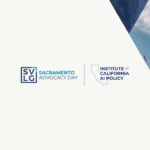It was a typical early summer day in the Bay Area — a brisk, cloudy morning that would warm up as soon as the sun came out. For a small group of youth, however, it was not a typical day. For many, it was the first time they would meet classmates they might only recognize from last year’s Zoom classroom. Nervous energy, coupled with the necessary safety precautions, served as a constant reminder that it wasn’t a typical school day – or year. The masks and social distancing were reminders that once normal events – in this case, summer camp – were no longer normal affairs.
Two students, a brother, and a sister, had different reactions to the past year. One hated being in a virtual classroom. There was no time for him to connect and talk with peers, and there were no organized activities or interactions with teachers outside of the computer screen. His sister liked virtual school. It allowed her to complete work on her schedule, spend time with her family, and learn new things from her mom. Both siblings were anxious about what they would experience once they returned to in-person learning.
For many students, this anxiety is normal. For most, returning to in-person school will be a dramatic shift, but thanks to the support from teachers, administrators, and staff, the anxiety will dissipate as new routines form. The challenges of being in large groups, being away from family, and re-learning how to make connections with people will require all to adapt. With support, students will, in time, become more resilient and succeed in the face of their new reality.
Inevitably, the lives of many students returning to campus will look dramatically different from their lives in March of 2020. Some of them might have acquired a new sense of hopelessness and anxiety triggered by losing a loved one during the pandemic. Others might have gone through the emotional toll of a parent or guardian being unemployed and the economic uncertainty of managing to put food on the table and pay rent. Some students experienced varying levels of trauma during the lockdown. Every child deals with difficult situations differently. For some, returning to school might be a welcome change. For others, it can be another stressor that will require the child to build resilience to have their needs met. Schools must be prepared for all the different ways students will need to be supported as they return to physical campuses in the fall.
This moment is a unique and powerful opportunity for schools. Before the pandemic, schools struggled with supporting youth through trauma and providing support for students who might have special mental health needs. According to the National Alliance on Mental Illness (NAMI) “One in six youths in the U.S. aged 6-17 experience a mental health disorder each year.” In a class of 30 students, five might be struggling with depression, anxiety, PTSD, or other mental health needs. At the same time, only about half of young people with mental health needs receive any kind of treatment, regardless of whether this treatment is enough to fully support the child.¹
Because of a lack of resources, schools are often understaffed when it comes to school psychologists, mentors, counselors, social workers, nurses, and other trained professionals.² Schools have done their best to meet the needs of their students by partnering with local universities to provide internships for future certified counselors and providing professional development to coach teachers in supporting students through trauma. More support from the federal government and State of California are on their way to support schools in their efforts to better meet the needs of youth experiencing a mental health need. These funds put a new premium on supporting youth through the trauma of the pandemic and a greater emphasis on supporting youth mental health. If there ever was a time to adequately fund and fully support the mental health of all students, now is the time.
For years before the onset of COVID, a San Jose school, Sunrise Middle School, has featured regular meditation for their students and an integrated social-emotional curriculum. They have taken an intentional and systematic approach to promote mental health and have developed a quality support system, with intentional adult relationships that provide a safety net for students who might need additional individual support. Daily meditation sessions serve as an opportunity to proactively build resilience, a chance for calm, and a way for youth to learn how to be in the now. Online meditation class was so popular among students during the pandemic that many students only showed up for that particular Zoom class. This year’s proposed additional funding allocations, provided by The Cares Act and the Governor’s proposed budget, will set California spending on education to a historic high. With just money proposed from Proposition 98, per-pupil spending is projected to be $13,977. Including federal CARES Act funding and other sources, the governor has projected per pupil expenditures to be $21,152.³ In 2018, per pupil expenditures, were $12,498, nearly half what is projected for this year.⁴ At Sunrise Middle School, this additional funding means that all students have access to daily meditation to re-center themselves during the school day. These programs are something the school has always wanted to expand and can now do so with the promised funding. However, as is the case with most things in education, short-term money is tasked with supporting a long-term vision for supporting students.
Schools can play an important role in early detection, which studies show is vital to limiting the severity of mental disorders and reducing healthcare costs during a person’s life. In addition, many youths receive mental health support in a school setting rather than from a specialty provider away from school.² Some questions many school and district leaders must ask themselves are: How can we support students during this crucial school year? How are we equipping our staff to identify students with additional needs? How can existing programs be revitalized and informed by the events of last year?
Where to start if you are a school? At a recent roundtable hosted by SVLG, Dr. Steven Adelsheim of Stanford University and Dr. Mary Ann Dewan Superintendent of Santa Clara County Schools talked about tangible ways schools can use this moment to meet the needs of students as they return to in-person learning. This support must include the major stakeholders on campus: teachers, students, and families.
First, schools must support teachers by allowing them extra time to transition to campus and process with each other what has transpired during the pandemic. Schools should provide explicit professional development to strengthen teachers’ abilities to support their resilience and their student’s well-being. Second, allow students ample avenues to talk and communicate with a consistent adult. Adults must start with an asset-based approach towards students. Schools must think about what strengths students are bringing back to campuses and build out ways to use these strengths to accelerate the healing needed at this moment. This can be done by seeing youth and their families as allies in designing mental health supports and creating easy channels of communication between families and schools. Finally, this is a time to truly co-create with families the mental wellbeing supports and ways to build resilience. This moment calls for an opportunity to quicken schools in their ability to proactively meet the needs of students’ well-being. With money and motivation, this moment for schools can become, as Dr. Dewan puts it, “centers of mental wellness.”
As student mental health and trauma support gain added attention and funds, for this next school year, the big question remains: How long will the funding last to support this moment?
###
July 16, 2021
Sources:
1) https://www.nami.org/Advocacy/
3) http://www.ebudget.ca.gov/
4) https://edpolicyinca.org/





